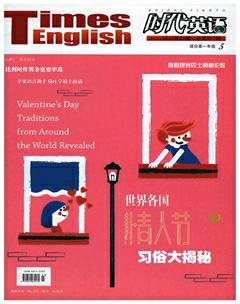跟踪导练(一)4
阅读理解
A
Vincent Willem van Gogh (30 March, 1853—29 July, 1890) was a Dutch Post-Impressionist artist. He is considered one of the greatest artists with great influence on the greatest artists with great influence on the 20th-century art.
Van Gogh spent his early adult life working for a firm of art dealers. After a brief period as a teacher, he became a missionary(傳教士) in a very poor mining region. He did not begin his career as an artist until 1880; however, during the last ten years of his life, he produced more than 2,000 pieces, including around 900 paintings and 1,100 drawing and sketches(素描). He worked only with somber colours until he met Impressionism and Neo-Impressionism in Paris. Van Gogh used their bright colours and style of painting in a uniquely recognizable style. Most of his best-known works were produced during his final two years, when he was suffering from serious mental illness.
In 1890, at the age of 37, van Gogh shot himself in the chest. He died two days later, with Theo, his brother and his best friend, at his side, who reported his last words as “The sadness will last forever.” It would not take long before his fame grew higher and higher.
Van Goghs mother threw away quite a number of his paintings. The only painting he sold during his lifetime, The Red Vineyard, was created in 1888. It is now on display in the Pushkin Museum in Moscow, Russia. Several paintings by van Gogh rank among the most expensive paintings in the world. On March 30, 1987 van Goghs painting Irises was sold for a record of $53.9 million at Southbys, New York. On May 15, 1990 his Portrait of Doctor Gachet was sold for $83.5 million at Christies, thus setting a new price record.
1. When did van Gogh begin his career as an artist?
A. At the age of 17. B. At the age of 27.
C. In his late adult life. D. In his early childhood.
2. What does the underlined word “somber” in Paragraph 2 mean?
A. Colorful. B. Different. C. Dark. D. Bright.
3. Whats the right order of van Goghs life experience?
a. worked as a teacher
b. took up drawing
c. worked in an art firm
d. worked as a missionary
A. c, a, b, d B. c, a, d, b C. b, c, a, d D. b, a, c, d
4. Which of the following can best describe van Goghs final two years?
A. Sad and boring. B. Normal and peaceful.
C. Happy but fruitless. D. Painful but productive.
Bendprint
A study of art history might be a good way to learn more about a culture than it is possible to learn in general history classes. Most typical history courses concentrate on politics, economics and war. But art history focuses on much more than this because art reflects not only the political values of a people, but also religious beliefs, emotions and psychology. In addition, information about the daily activities of our ancestors can be provided by art. In short, art expresses the essential qualities of a time and a place, and a study of it clearly offers us a deeper understanding than what be found in most history books.
In history books, objective information about the political life of a country is presented; that is, facts about politics are given, but opinions are not expressed. Art, on the other hand, is subjective: it reflects personal emotions and opinions. The great Spanish painter Francisco Goya was perhaps the first truly “political” artist. In his well-known painting The Third of May, 1808, he criticized the Spanish government for its abuse of power over people.
In the same way, art can reflect a cultures religious beliefs. For hundreds of years in Europe, religious art had been almost the only type of art that existed. Churches and other religious buildings were filled with paintings that described people and stories from the Bible. Although most people couldnt read, they could still understand the Bible stories in the pictures on church walls. By contrast, one of the main characteristics of art in the Middle East was (and still is) its absence of human and animal images. This reflects the Islamic belief that statues are not holy.
5. What can we learn from the first paragraph?
A. Art history shows us nothing but the political values.
B. History books focus on personal emotions and opinions.
C. Art history shows us something about emotions and beliefs.
D. History classes concentrate on religious beliefs and emotions.
6. Francisco Goya and his painting are used as an example to show ___.
A. art is subjective, which is different from history books
B. Spanish government abused its power over people
C. in history books, facts about politics are given
D. Francisco Goya was the first “political” artist
7. What can be inferred from the text?
A. History teachers should be quite subjective.
B. Painters only painted Bible stories for centuries.
C. You can hardly find human images in Islamic paintings.
D. Artists paint people from the Bible to show their political beliefs.endprint

